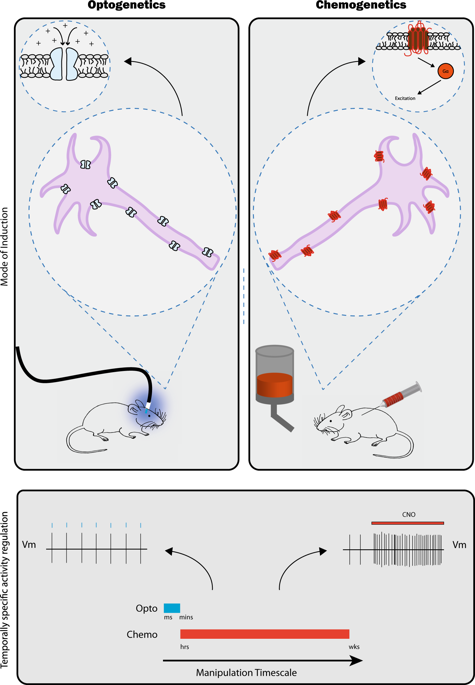当前位置:
X-MOL 学术
›
Neuropsychopharmacology
›
论文详情
Our official English website, www.x-mol.net, welcomes your feedback! (Note: you will need to create a separate account there.)
Wiring the depressed brain: optogenetic and chemogenetic circuit interrogation in animal models of depression.
Neuropsychopharmacology ( IF 7.6 ) Pub Date : 2018-12-05 , DOI: 10.1038/s41386-018-0291-6 Jessie Muir 1 , Joëlle Lopez 2 , Rosemary C Bagot 2, 3
Neuropsychopharmacology ( IF 7.6 ) Pub Date : 2018-12-05 , DOI: 10.1038/s41386-018-0291-6 Jessie Muir 1 , Joëlle Lopez 2 , Rosemary C Bagot 2, 3
Affiliation

|
The advent of optogenetics and chemogenetics has revolutionized the study of neural circuit mechanisms of behavioral dysregulation in psychiatric disease. These powerful technologies allow manipulation of specific neurons to determine causal relationships between neuronal activity and behavior. Optogenetic tools have been key to mapping the circuitry underlying depression-like behavior in animal models, clarifying the contribution of the ventral tegmental area, nucleus accumbens, medial prefrontal cortex, ventral hippocampus, and other limbic areas, to stress susceptibility. In comparison, chemogenetics have been relatively underutilized, despite offering unique advantages for probing long-term effects of manipulating neuronal activity. The ongoing development of optogenetic tools to probe in vivo function of ever-more specific circuits, combined with greater integration of chemogenetic tools and recent advances in vivo imaging techniques will continue to advance our understanding of the circuit mechanisms of depression.
中文翻译:

连接抑郁的大脑:抑郁动物模型中的光遗传学和化学遗传学电路审问。
光遗传学和化学遗传学的出现彻底改变了精神疾病中行为失调的神经回路机制的研究。这些强大的技术允许操纵特定的神经元,以确定神经元活动和行为之间的因果关系。光遗传学工具一直是绘制动物模型中类似抑郁症行为的基本电路的关键,它阐明了腹侧被盖区,伏隔核,前额叶内侧皮层,腹侧海马和其他边缘区对应激易感性的影响。相比之下,尽管化学遗传学相对不足,但为探测操纵神经元活性的长期效果提供了独特的优势。正在进行的光遗传学工具开发工作,以探究越来越多的特定电路的体内功能,
更新日期:2019-01-26
中文翻译:

连接抑郁的大脑:抑郁动物模型中的光遗传学和化学遗传学电路审问。
光遗传学和化学遗传学的出现彻底改变了精神疾病中行为失调的神经回路机制的研究。这些强大的技术允许操纵特定的神经元,以确定神经元活动和行为之间的因果关系。光遗传学工具一直是绘制动物模型中类似抑郁症行为的基本电路的关键,它阐明了腹侧被盖区,伏隔核,前额叶内侧皮层,腹侧海马和其他边缘区对应激易感性的影响。相比之下,尽管化学遗传学相对不足,但为探测操纵神经元活性的长期效果提供了独特的优势。正在进行的光遗传学工具开发工作,以探究越来越多的特定电路的体内功能,


























 京公网安备 11010802027423号
京公网安备 11010802027423号